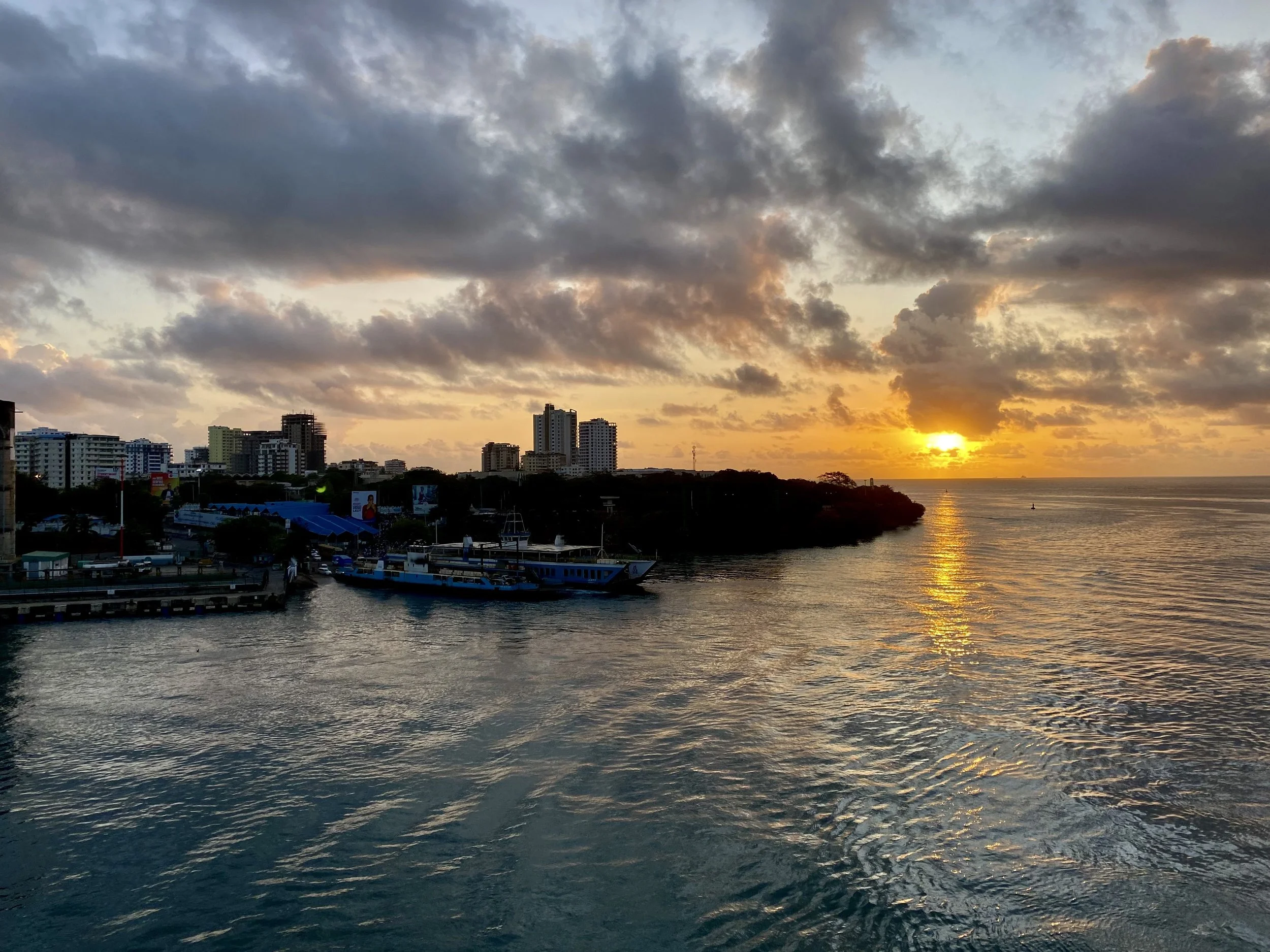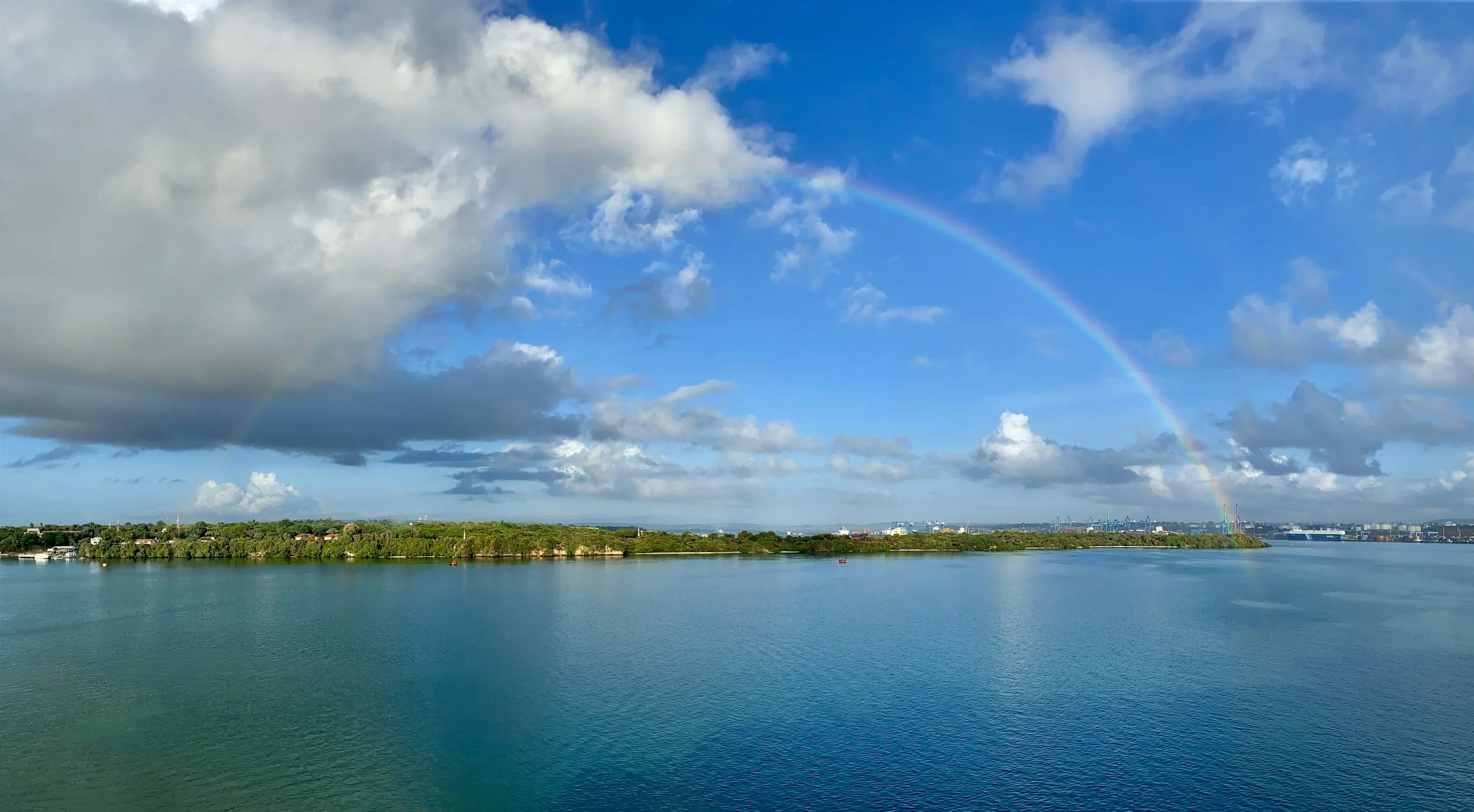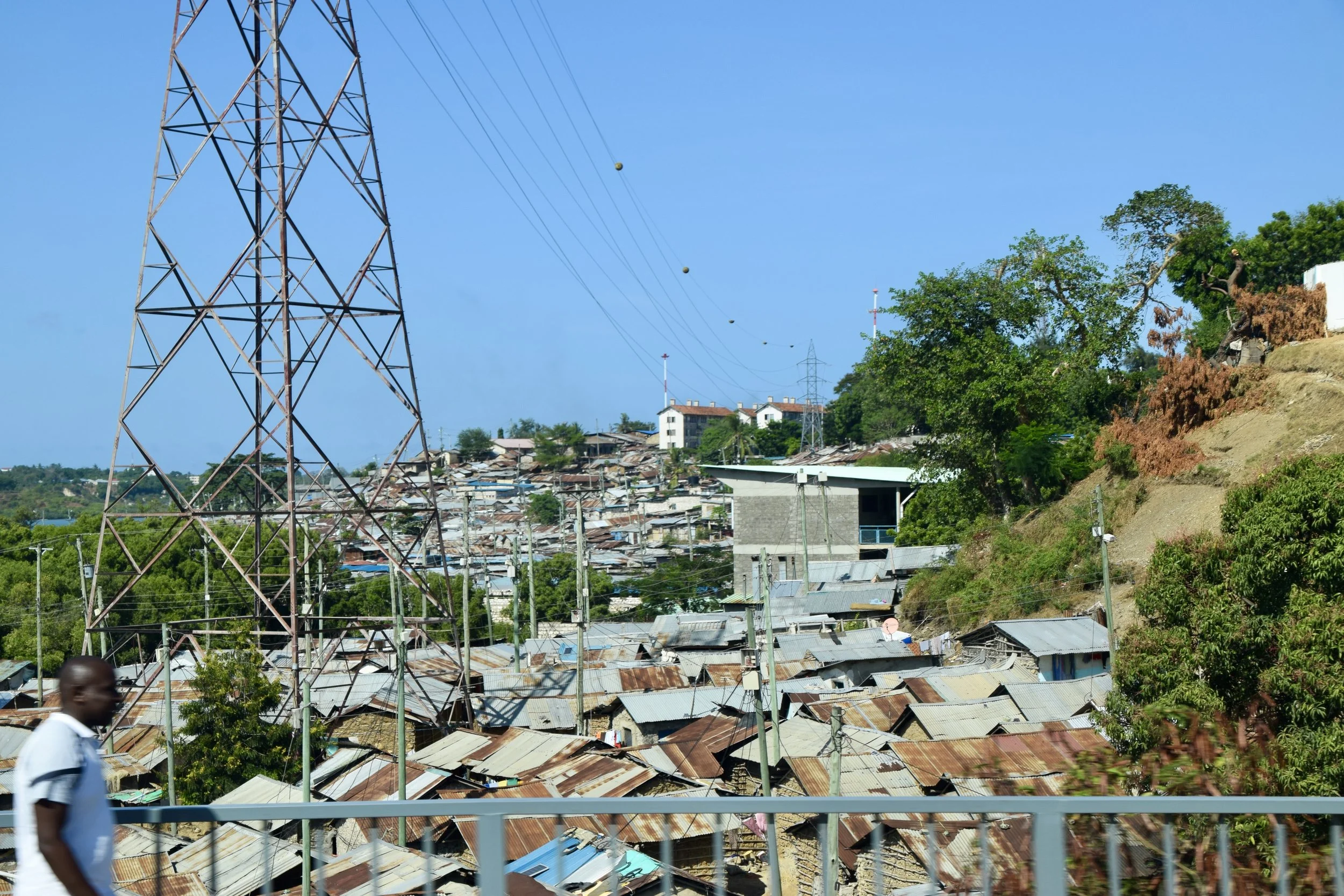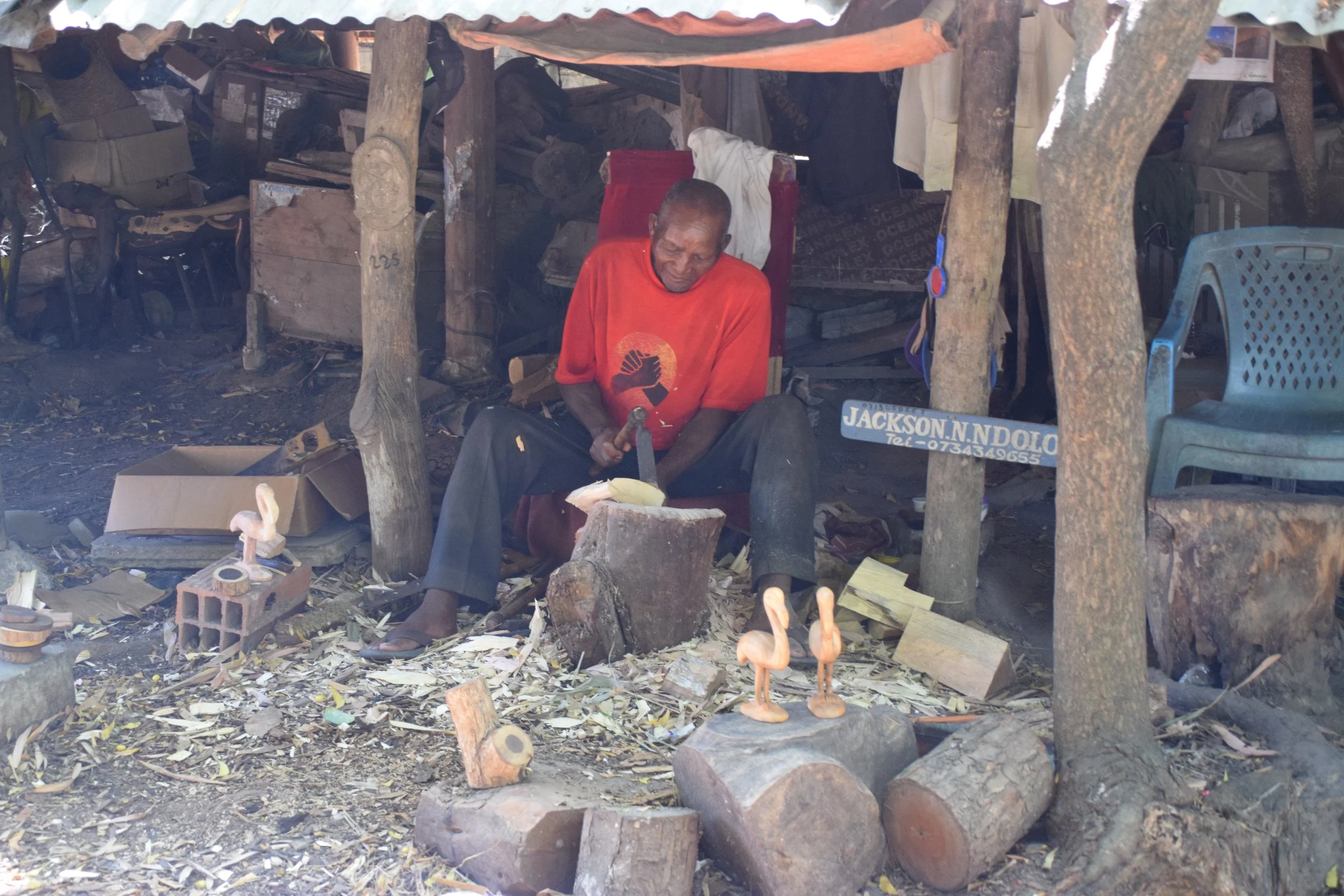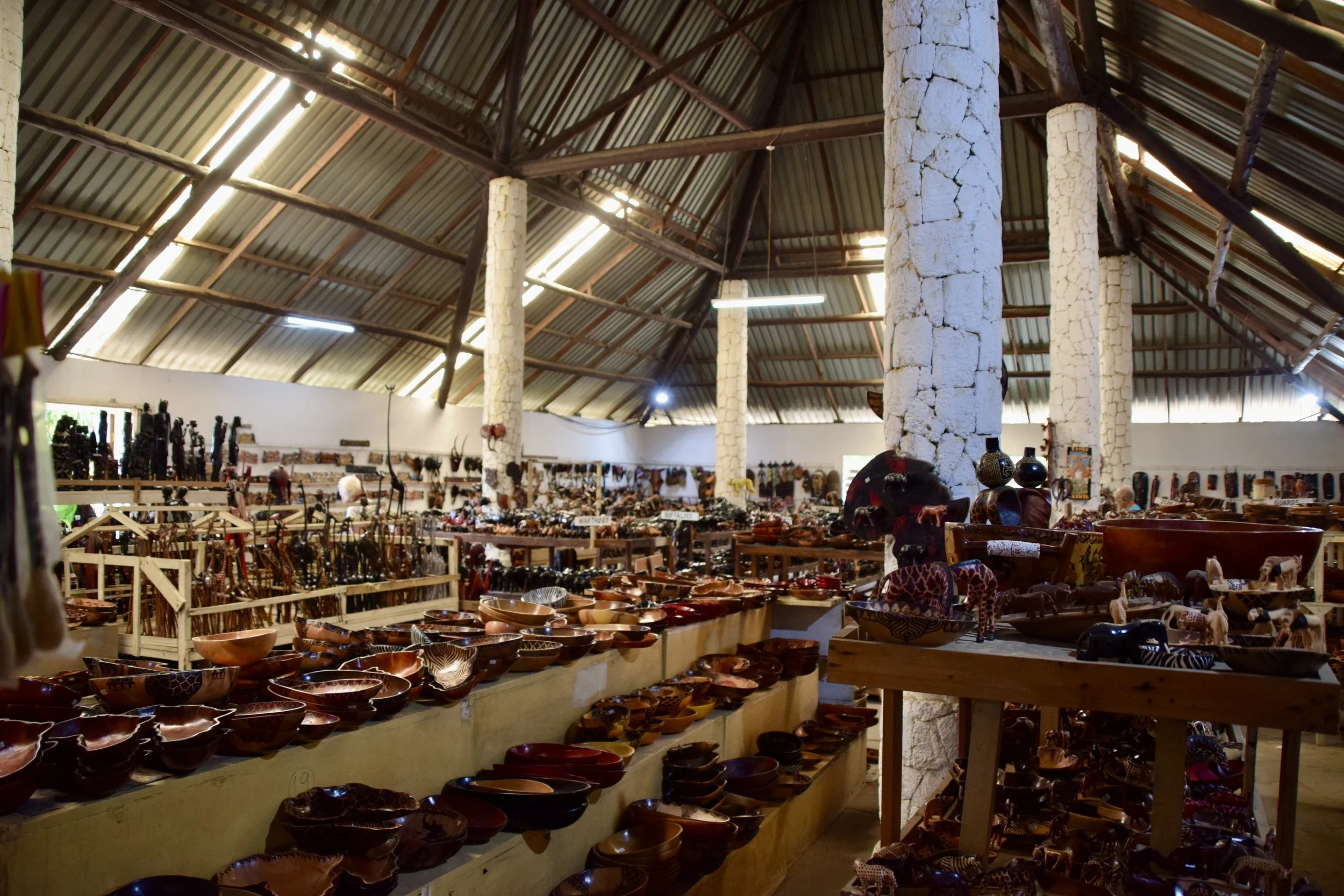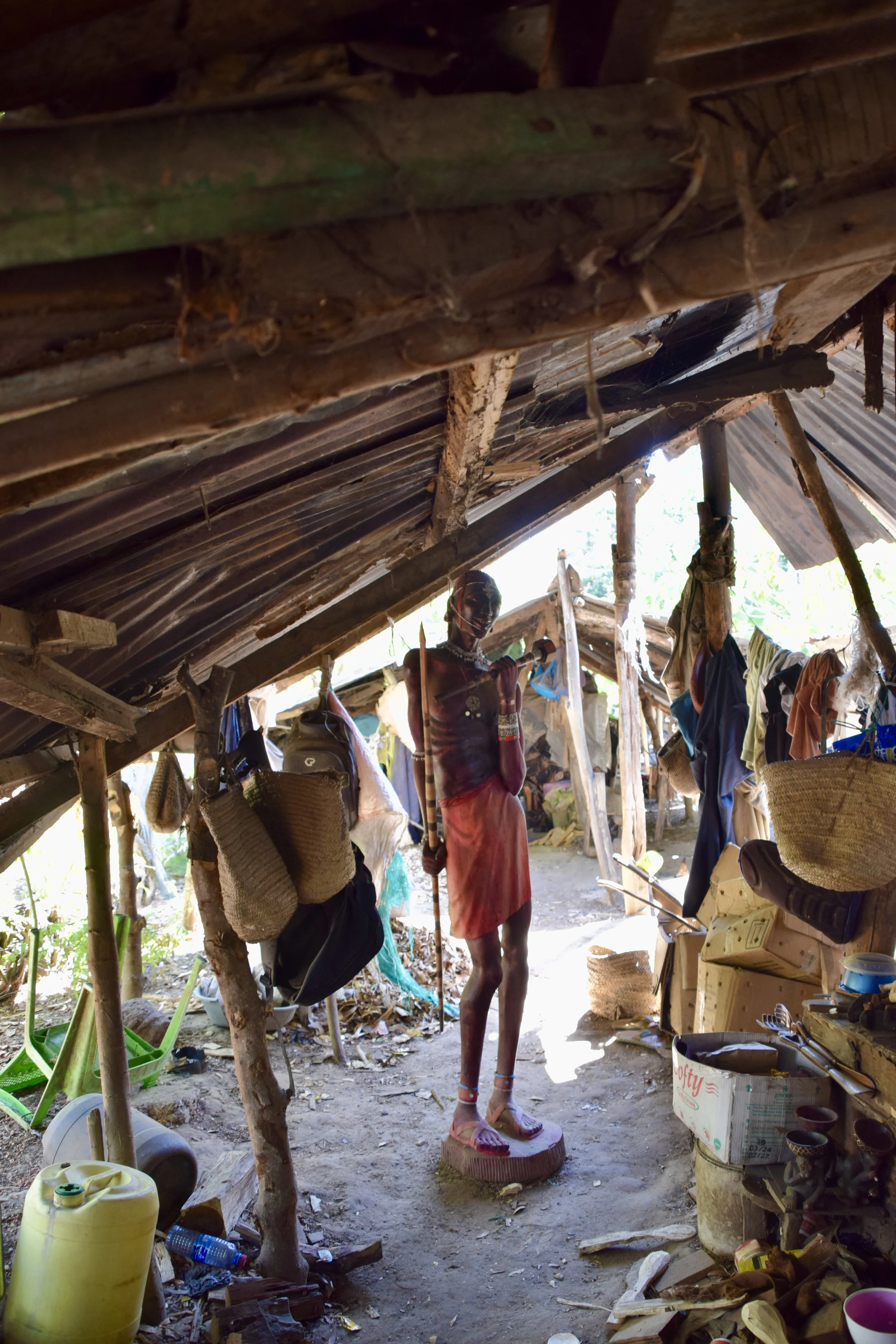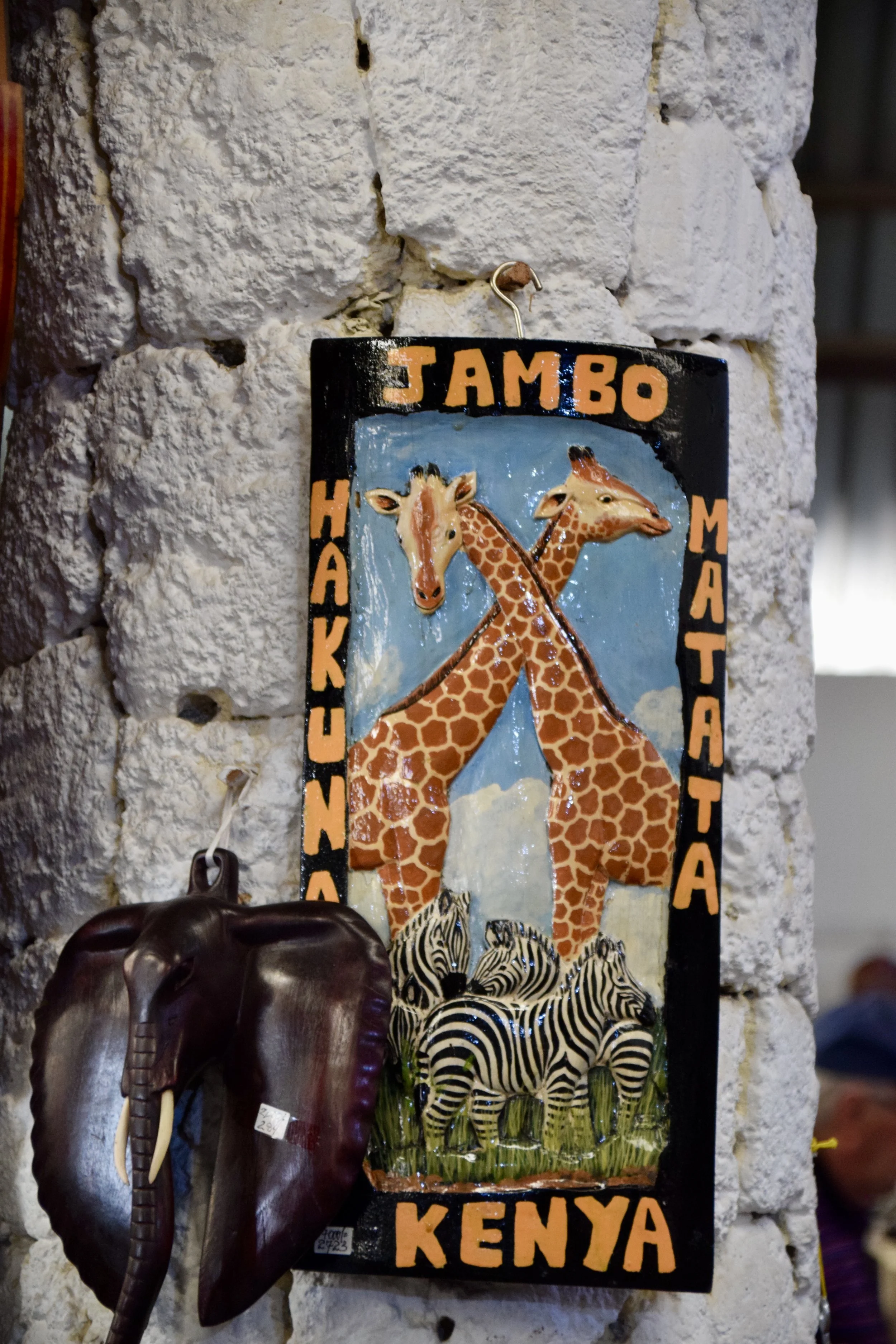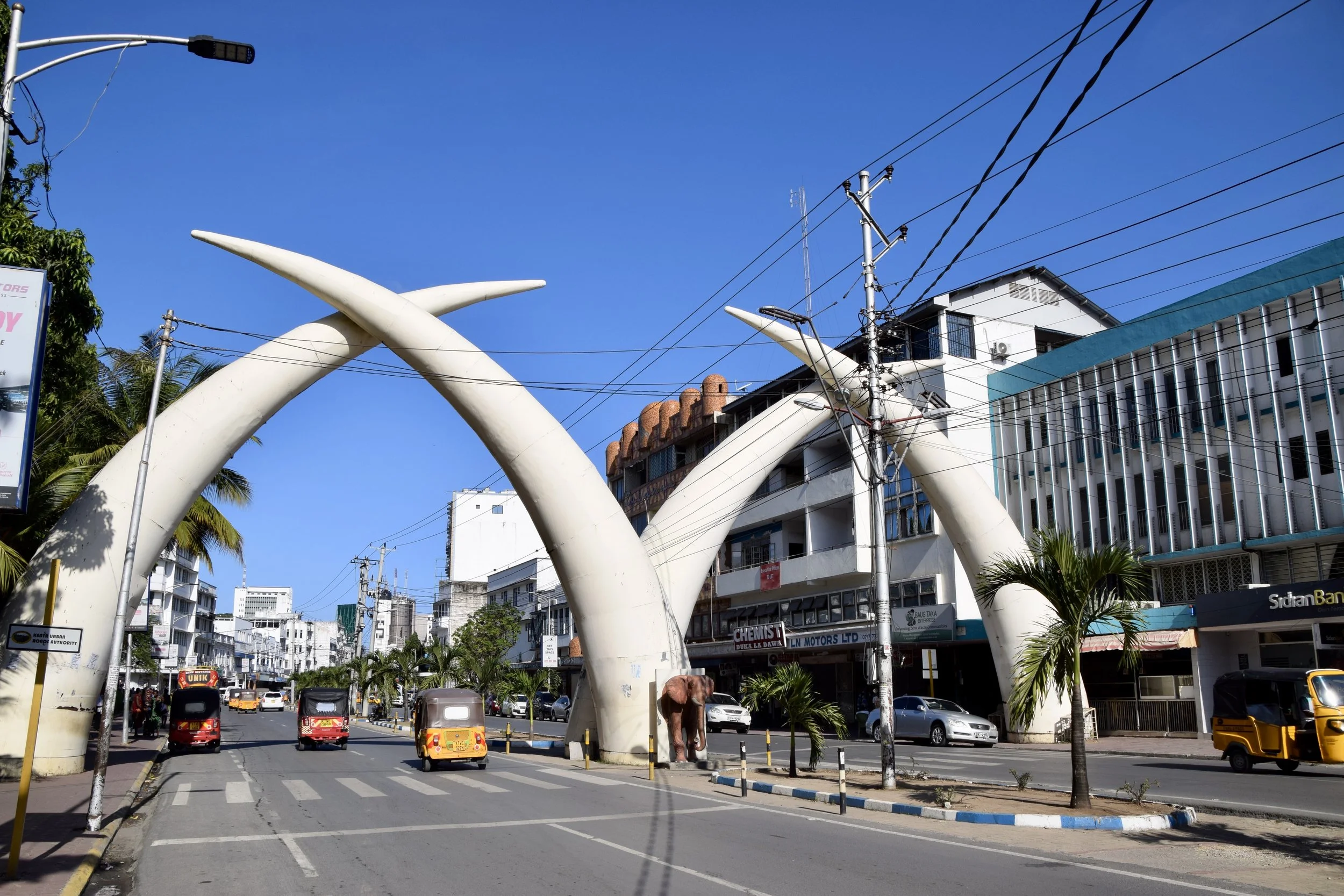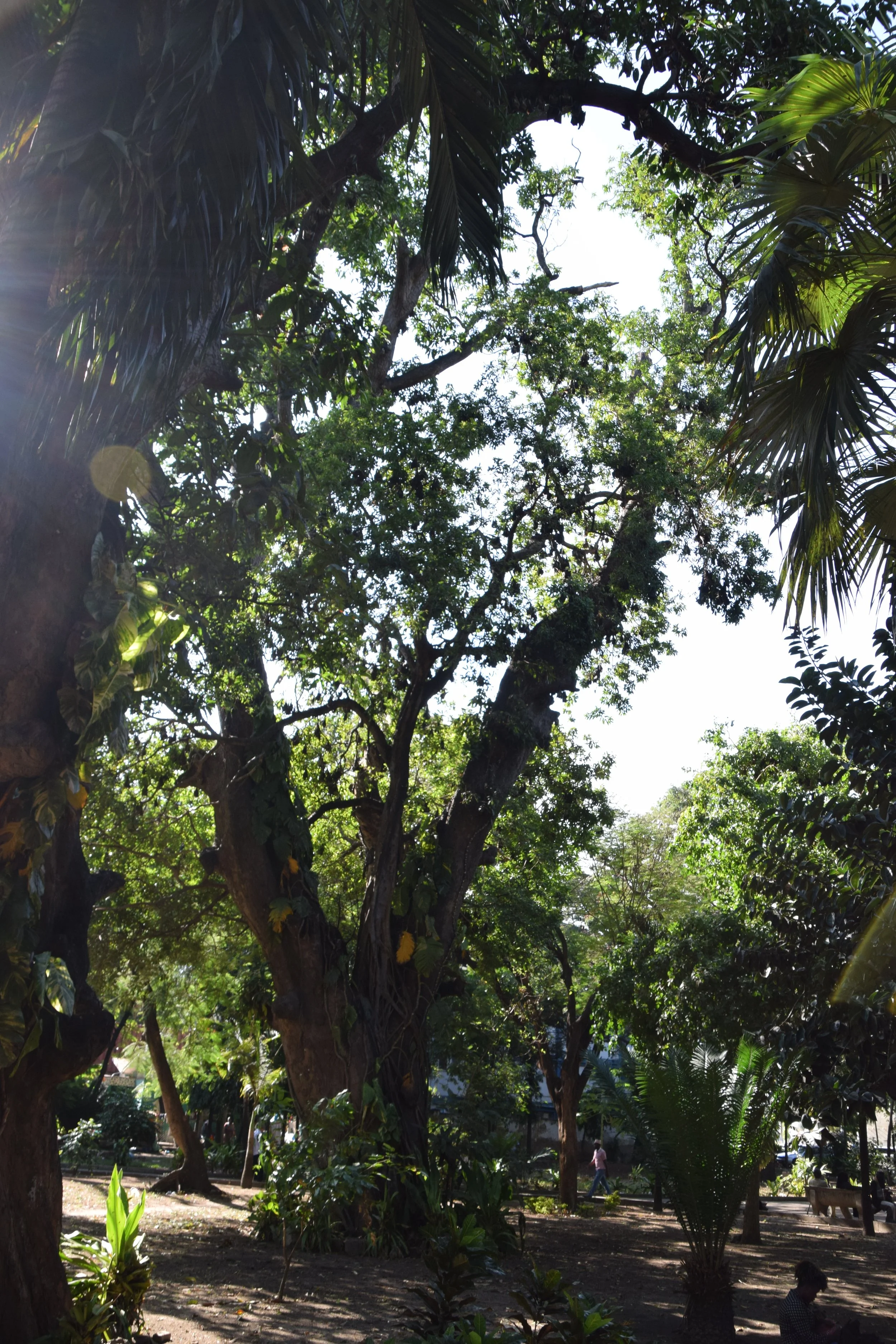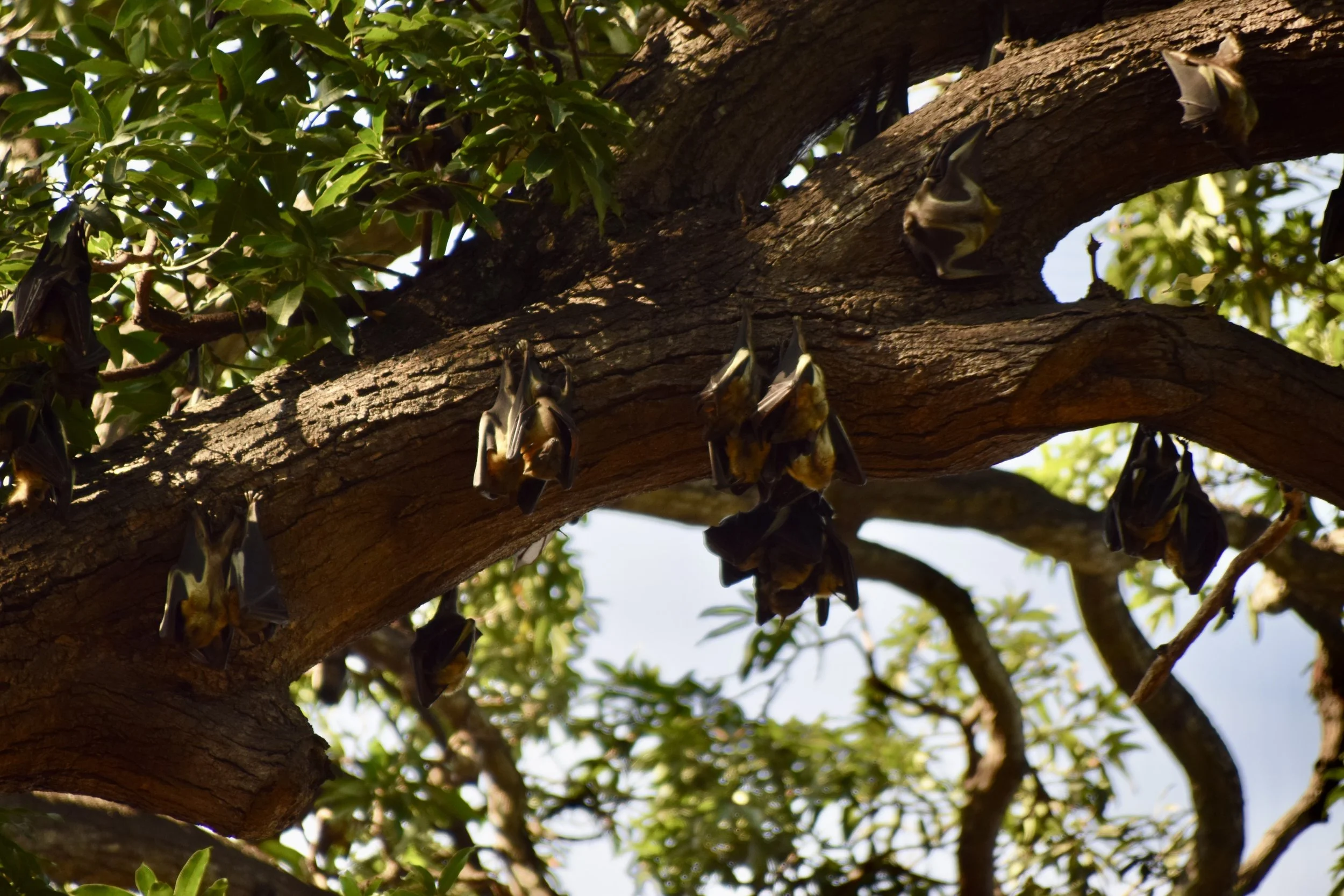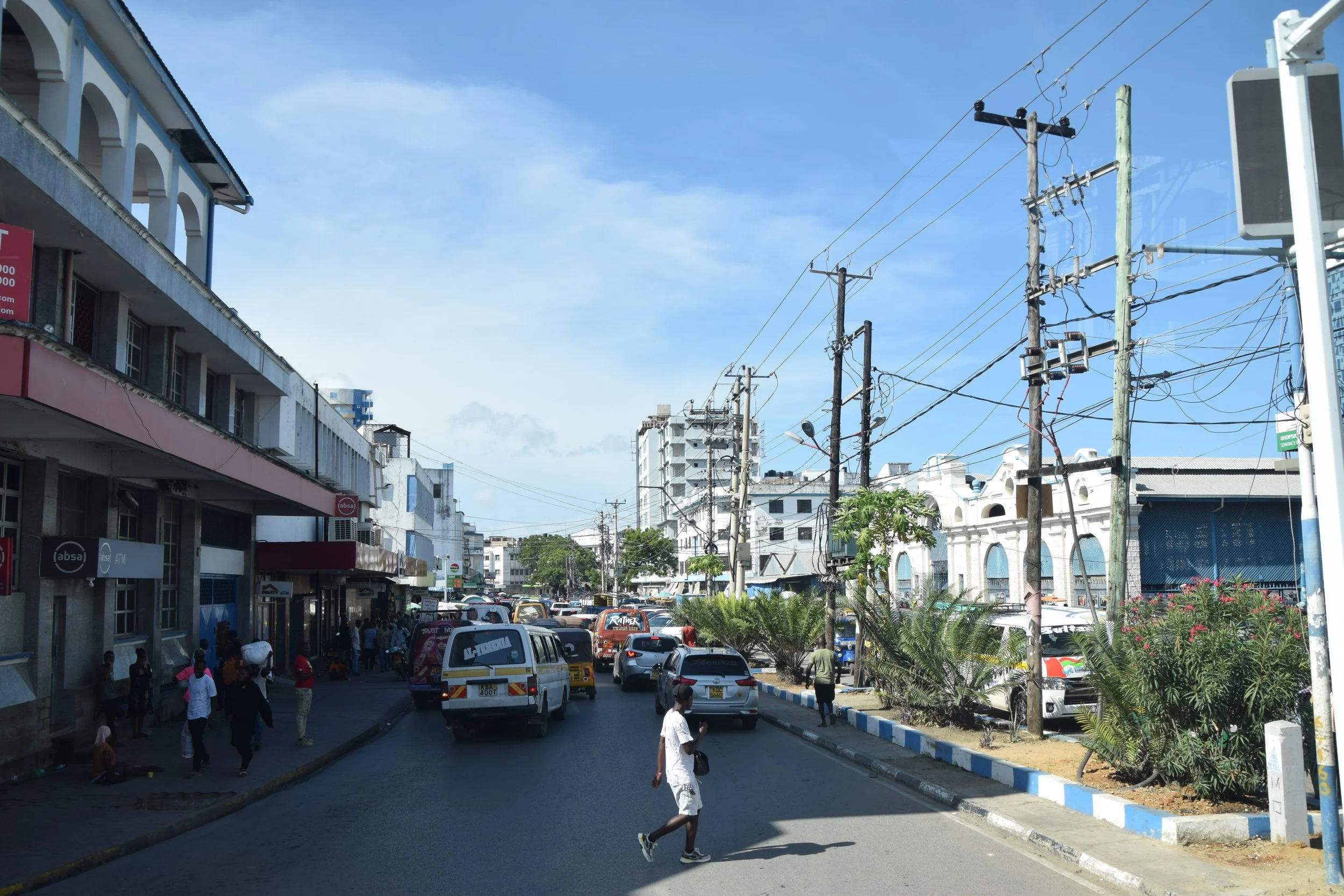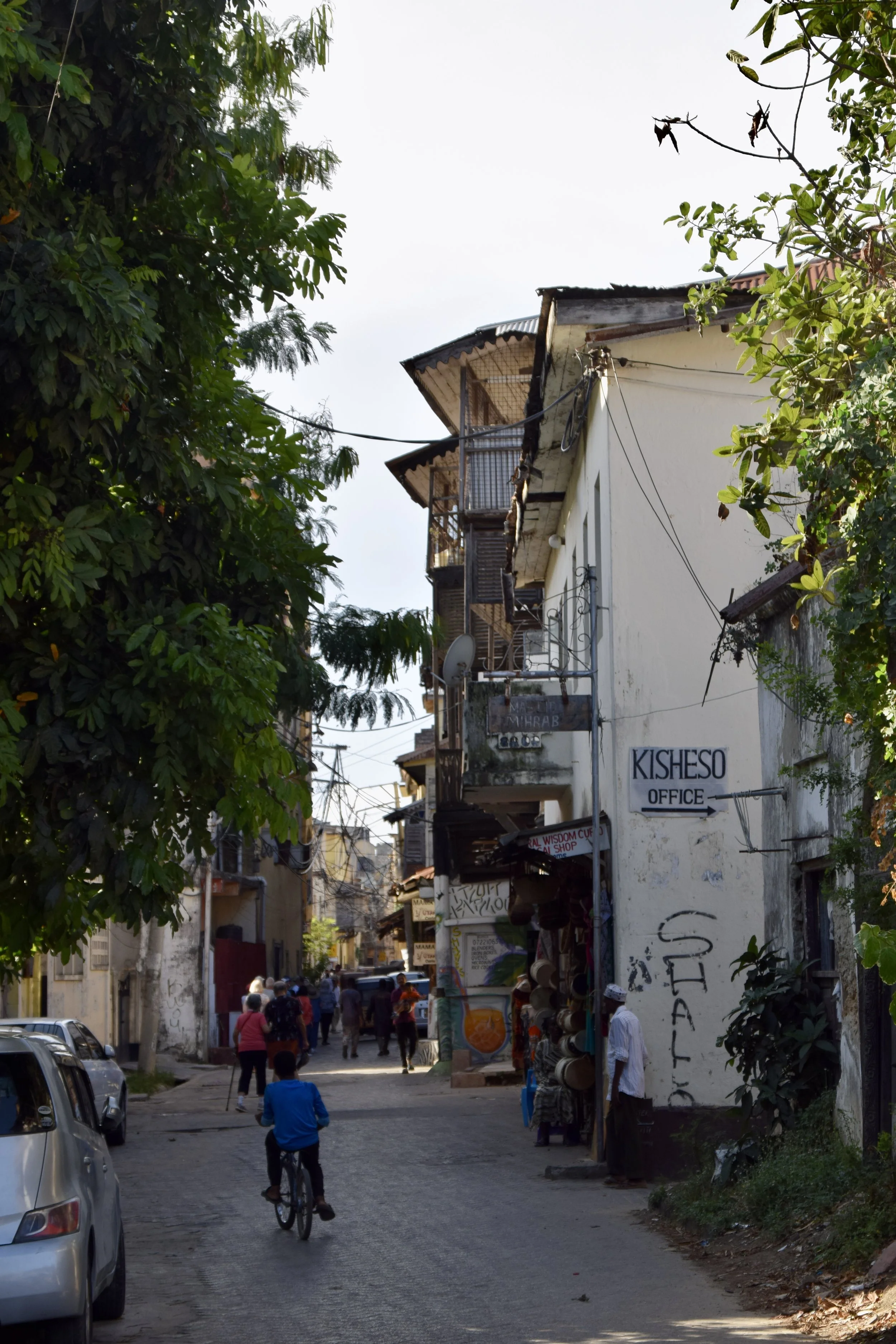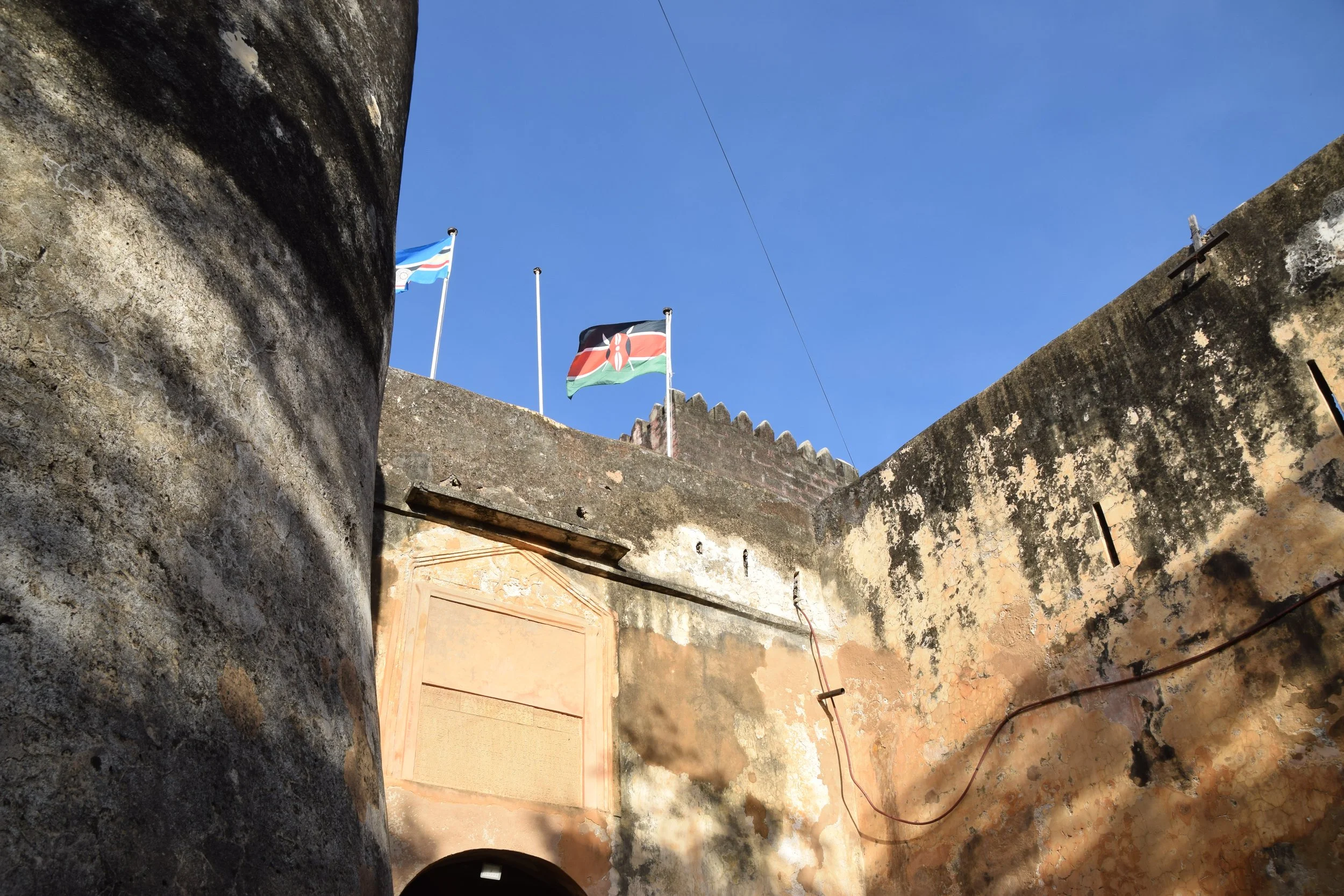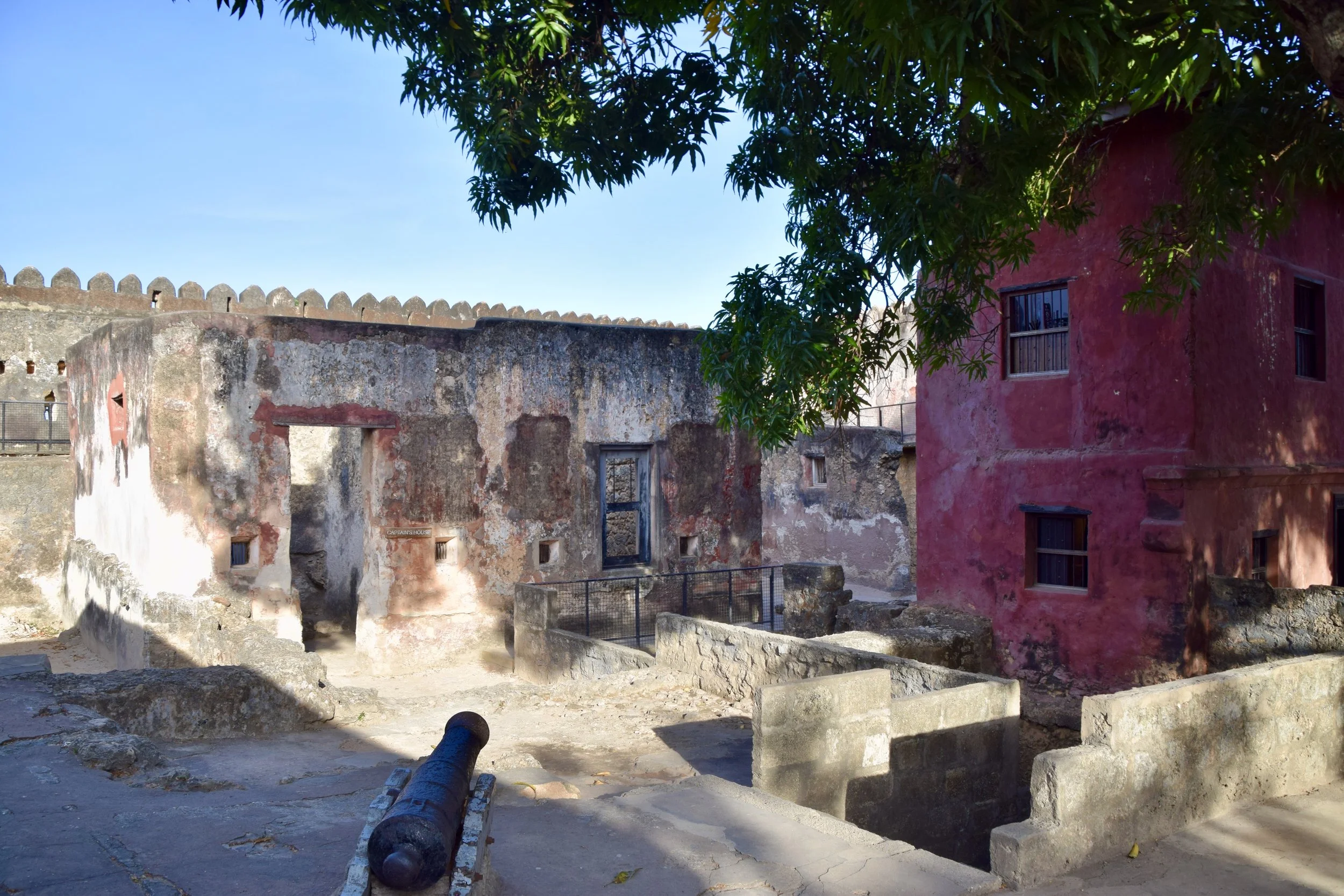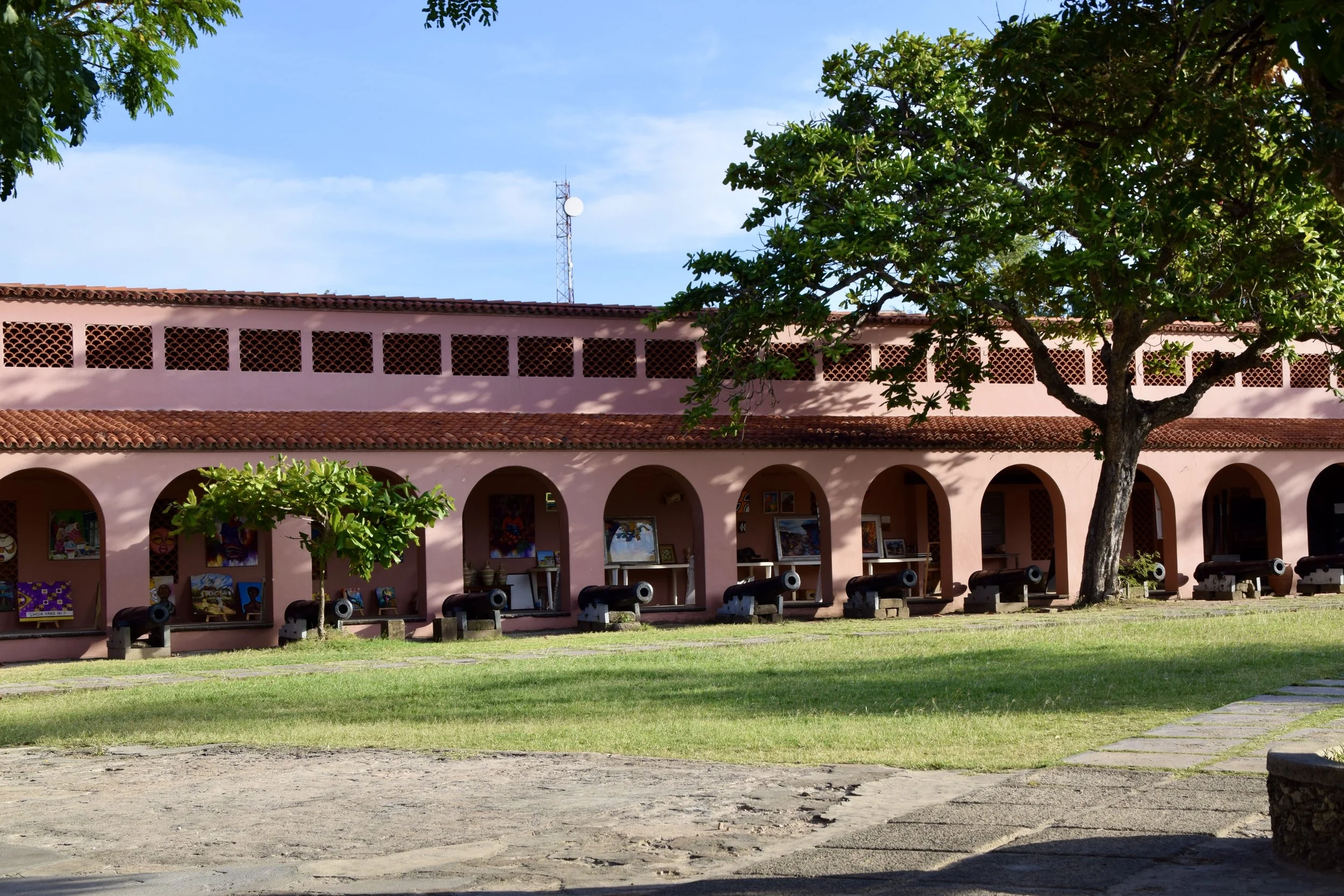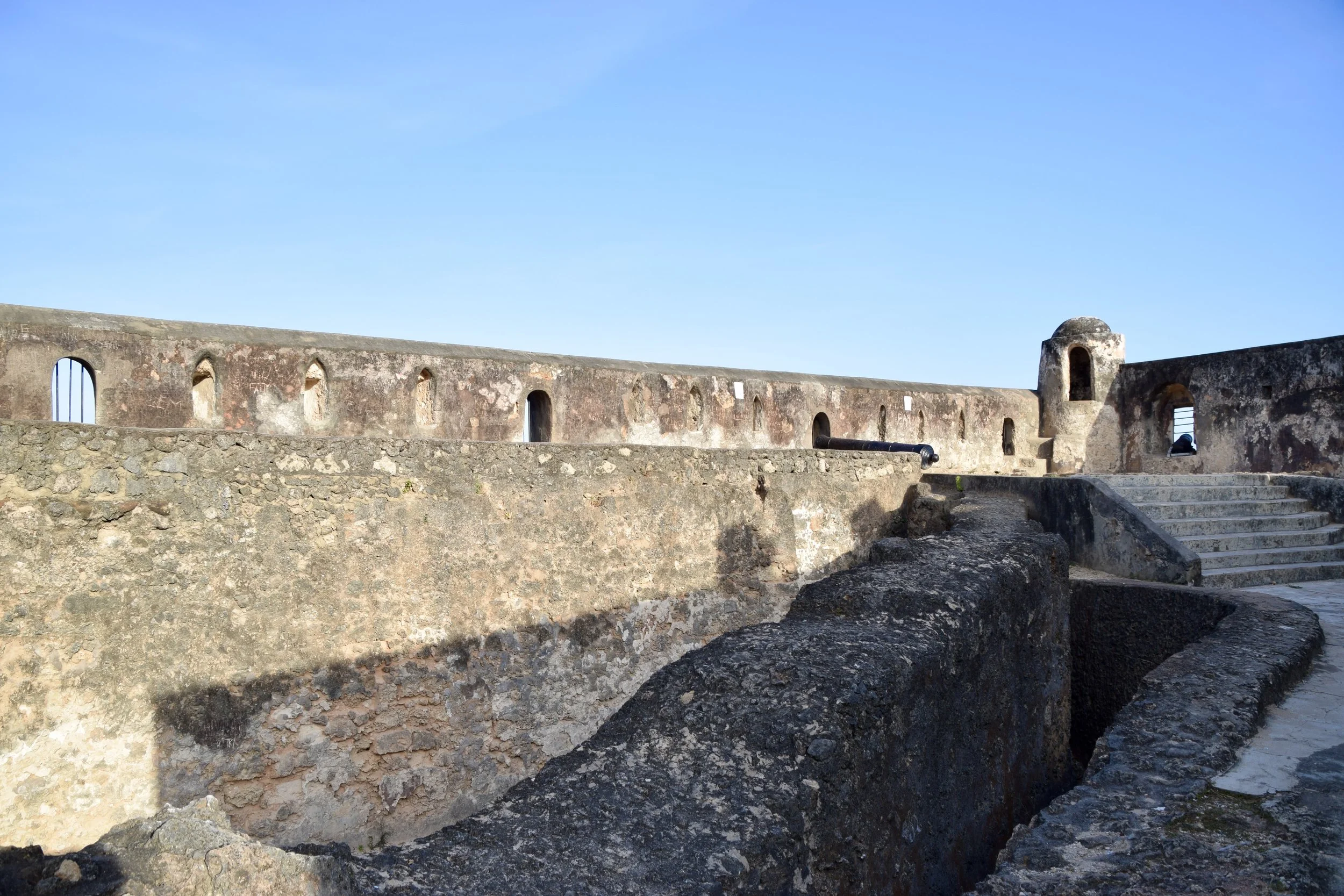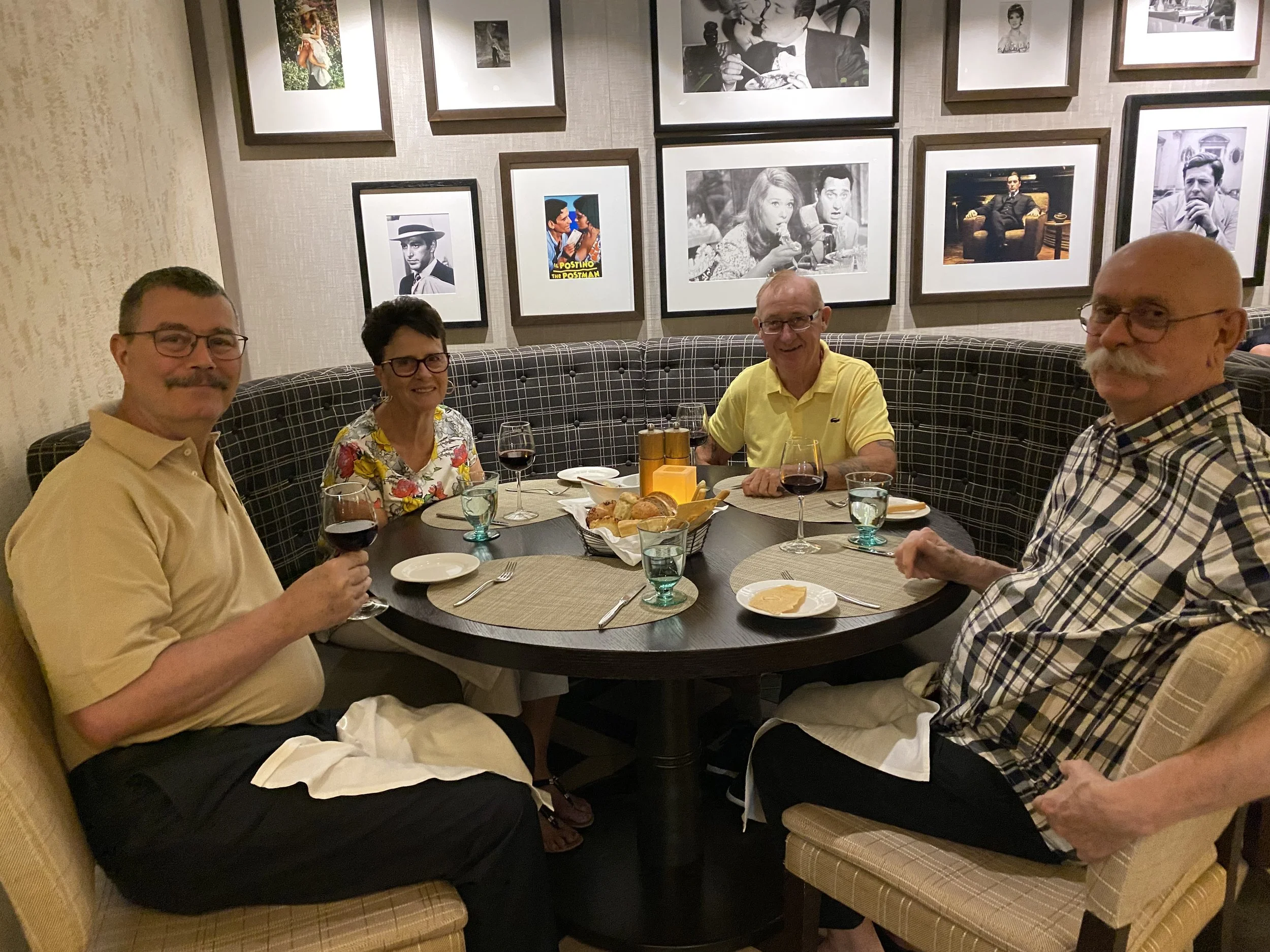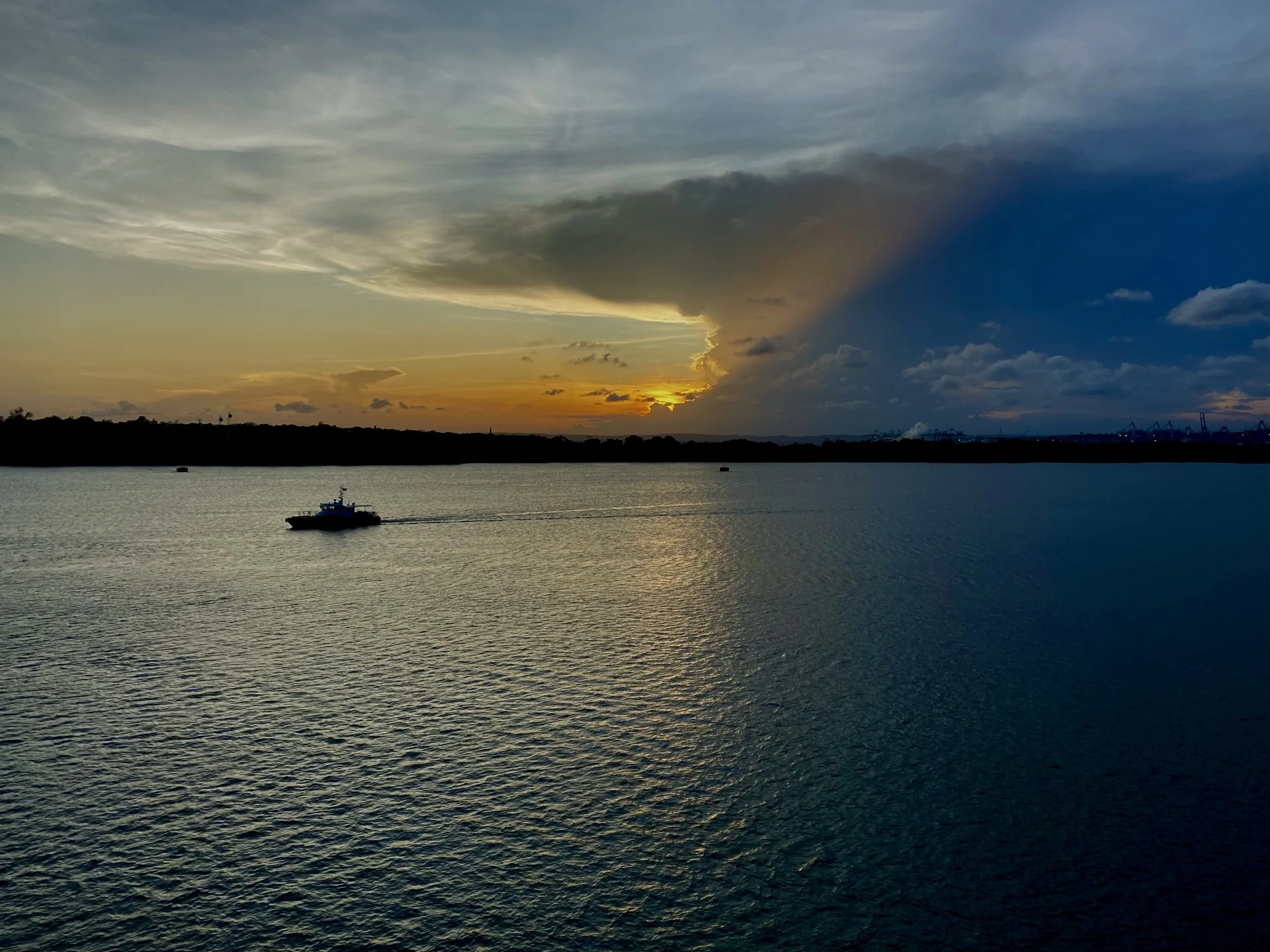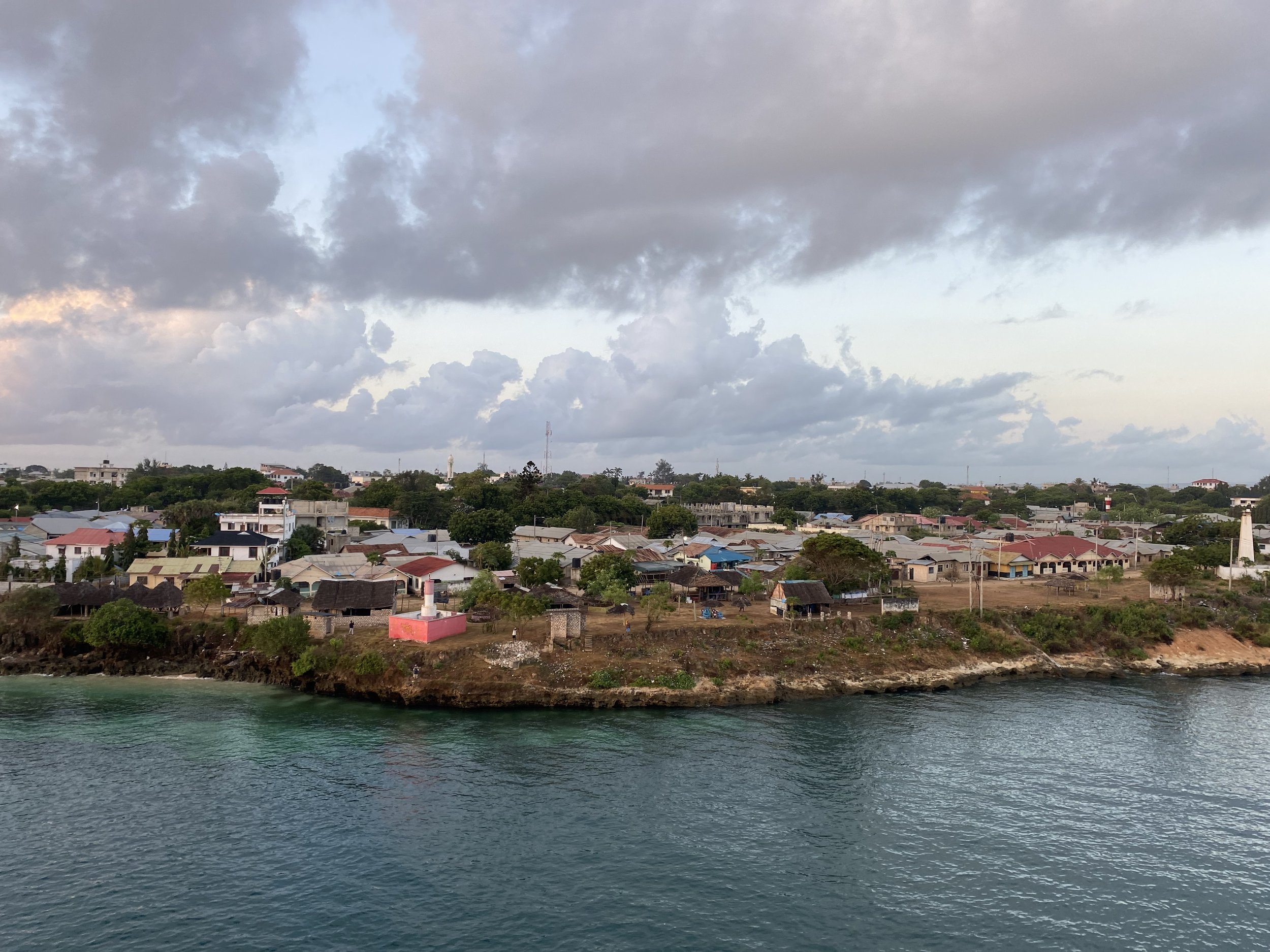
Day 23
Kenya: Day One
Woke up and headed to brekkie just as we were pulling into the coastal city of Mombasa, Kenya. A nice sunrise greeted us as we neared the dock.
And then it promptly began to rain. Downer? Not at all, because Kenya was just setting us up for the bigger welcome. Almost as soon as it started, the rain stopped, the sun came back out, and we were treated to this:
It’s only the second or third time in my life I’ve seen a complete rainbow end-to-end and it’s the first time in my life I’ve ever literally seen the end of the rainbow. It was right next to our ship, in the water. Now, if there was a pot of gold, it was well beneath the surface of the water, so I can’t verify the truth of that tale or not. I’m pretty sure I heard a frog playing banjo, though.
That’s the iconic opening from “The Muppet Movie” - 1979, before CGI was a thing. The camera slowly zooms in on a swamp, a song begins, the unmistakable voice of Kermit the Frog sings about rainbows. As the camera moves in close enough to see him, there’s an audible gasp from the audience in the theatre I saw it in. Here was a character we’d only ever seen from the waist up, sitting on a log in the water, playing a banjo. How? Later, the camera pans down and we see his reflection in the water. Another gasp. I really miss those days, when half the wonder of going to see a movie was “how on earth did they film that?” Now, you know that most of it is done in a computer and for me, much of that magic is gone.
Wanna feel old? As of this writing, “Rainbow Connection” is 45 years old. FORTY-FIVE YEARS OLD.
It was up for an Academy Award for Best Song that year. It lost to “It Goes Like it Goes” from the movie “Norma Rae”. You might well remember that the movie was a thing, but I challenge anyone to sing that song off the top of their head right now. You can’t. But I’ll bet you knew at least the chorus to “Rainbow Connection” if not the entire song. If you just watched that video just now, you’ve probably still got it in your head. It’s literally my favourite song of all time and it got robbed at the Oscars….and I’m still fucking bitter about it. Even if you might not agree that it’s one of the best songs ever written, you can certainly agree that it’s a damn shade better than “It Goes Like it Goes.”
Sorry. Back to the trip. We had a quick lunch, then headed down to the dock to hop on the bus for our included excursion, an overview of Mombasa.
Mombasa is a port city and that brings a good portion of what wealth the city has… which isn’t much. A whopping 25% of the people in Kenya live below the poverty line and in Mombasa, 40% of the population is unemployed. Those that are employed usually hold down two or three jobs just to make ends meet. While the city does have first-world amenities like water, sewage, electricity, and transportation, everything looks seriously run down and trashy.
Of course, there was the inevitable shantytown (which our guide called ‘slums’), but this one seemed rather small compared to ones we’ve seen in other African countries.
Everywhere you look, there are people trying to sell things. Often, these things are obviously used - I don’t know (or want to know) where the items were obtained before they were put out for sale. (The crime rate in Kenya is very high) Mixed in with those things were produce, clothes, and just about anything you can think of. Every street was lined with hawkers under their umbrellas.
A bit of cultural info on Kenya… everyone speaks English. It’s the official language. The national language is Swahili, also spoken by everyone, but business is done in English. The native Kenyans are comprised of 42 separate tribes, each with their own language. Our guide says the languages from one tribe to another are so different that if Octavian (our guide) were to speak to Octavian (our driver) in his mother tongue, it would be pointless. He also explained that each tribe has a special talent that is unique to that tribe and it’s handed down from generation to generation, or perhaps it’s genetic.
You know that string of Kenyan Olympic gold medals for long-distance running? All of them were from the same tribe. Our first tour stop was an artist cooperative of the Akamba tribe. The members of this tribe work with wood, using fairly primitive tools to make extraordinary wood sculptures.
But their “workshop” is even more primitive than the tools they use. This is Jackson Ndolo. He’s been here for 40 years.
I should point out that it was freaking hot. Temps in the high 30s (90s F) with a humidex over 38C (100F). There are no fans, no relief at all from the heat. Artists like Jackson will be here from 6 AM to 6 PM, working on animals, bowls, or other items to be sold in the “showroom”.
Some of the sculptures were really amazing. From skeletal figures made from a single piece of ebony wood to this astonishingly realistic wooden sculpture of a woman which took 6 months of work to carve.
The traditional greeting in Kenya is Jambo (JOM-bo), which is kinda like “wassup?” There were several people in our group who were from the Southern US (one couple was from Houston) and they would see the artists working on something and smile really big and say “JUMBO!” to them, usually with a drawl.
Bless their hearts. The sentiment was sincere.
“Jambo” might be familiar with you if you know the song “All Night Long” by Lionel Richie, but the other Kenyan phrase is probably even more well-known, especially if you’ve seen any version of The Lion King: Hakuna Matata
Didn’t buy anything in the shop, although I came very close to coming home with an embroidered tote bag with zippered pockets. In the end, I couldn’t think of a good use for it, as it was too big for my laptop and too small for my handbell gear. Ah well. I did like it, though.
After that, we headed to the Elephant Tusks - and we were told, “If you haven’t seen the Elephant Tusks, you haven’t been to Mombasa.” So we saw them.
Um…… OK. That was a letdown. We piled out of the bus and headed into an adjacent park. Have a look at this tree…
See them? Yeah, I know… you’re likely to just walk right under the tree without noticing… but here’s where a zoom lens comes in handy..
The trees are absolutely jammed with fruit bats. Hundreds and hundreds of them. Most were asleep, but a few would occasionally fly around.
Back on the bus and we’re off to the Old Town. We traveled down both of Mombasa’s main streets, which the guide said were the most modern streets in the city.
On these streets, you could buy more than just produce or clothes. There are places to buy cell phones, appliances, furniture, mattresses…..
Next stop was the Old Town, a maze of narrow streets. Various architectural styles fought for attention here as one invading culture after another ruled Mombasa.
Last stop of the tour was Fort Jesus, a UNESCO heritage site built by the Portuguese in 1593. It was taken and re-taken nine times over the next few hundred years, between the Portuguese, Omanis, and British. The British converted it into a prison for a brief time. Now it’s a museum.
Now, from the photos and descriptions thus far, you might be thinking that Kenya, or at least Mombasa, is poverty-striken, run-down, dirty, and barely above third-world status. You’d be right. Add to this the very high crime rate (our group always had TWO guides, one in front and one in back of the group wherever we went) and the fact that homosexuality is illegal here and you’d likely expect me to have nothing but bad things to say about it, but surprisingly, I really liked Kenya. I can’t explain it, either. Sometimes, you just feel a certain way about a place the minute you arrive and nothing that you see will make a dent in that feeling while you’re there. Kenya was one of those places for me. I’m in no big rush to return here, but I really enjoyed my time out in the city today.
Back to the ship for a much-needed shower, then off to dinner at Manfredi’s with Aussie besties Doug and Heather.
Ended the day with a second show by pianist Harrison Treble, this time without the band backing him. Lots of stuff by Elton John, the Beatles, and even the infamous “4 Chord Song” by the Axis of Awesome, which 99% of the audience had never heard before. And if you haven’t, either, you should give it a listen, it’s very clever. The premise is that nearly every pop song from the last 40 years is based on the same four chords.
And no, that’s not Jack Black in that video. They have a whole other song about how everyone asks him that.
I’ll leave this post (finally) with a picture of the lovely sunset we saw out the window of our cabin just before dinner.
